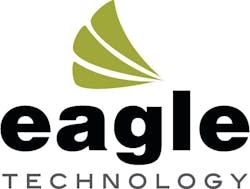Take Control of Your Airport Maintenance with a CMMS
Challenged by the increasing complexity of airport maintenance management? Integrating a computerized maintenance management system (CMMS) is an essential tool for today’s facility and maintenance managers, and airports are no exception. Airports cover acres of land; have multiple buildings, and varied types of equipment to maintain from conveyer belts to HVAC for their patrons’ comfort and safety. By using a CMMS, airport facility managers can reduce labor and energy costs, manage inventory, optimize asset performance and longevity, and insure safety.
Here’s how a computerized maintenance management system can help:
Plan Maintenance Tasks
- Scheduled preventive maintenance (PM) tasks set up in the CMMS can improve operational efficiencies and decrease labor and repair costs.
- The CMMS can track labor hours per equipment and per employee. Knowing how much time is required for regular maintenance and repairs provides valuable data for budgeting or repair vs. replace decisions.
- Stored maintenance procedures and checklists for each asset can ensure that equipment is properly serviced in a consistent and timely manner with the proper safety instructions included with every procedure.
- Preventive maintenance optimizes asset performance and reduces energy costs.
- Recorded asset data on scheduled maintenance and regular inspections provides documentation of compliance with safety regulations.
Track and Manage Maintenance Work Orders
- A CMMS stores and generates scheduled work orders based on pre-set asset maintenance schedules or run times.
- Authorized users throughout the airport can submit work requests directly into the CMMS and receive auto-updates via email when work is completed.
- Airport maintenance employees can open work orders, enter data, and then close scheduled maintenance work orders in the field. Having your CMMS integrate with mobile hand-held devices makes maintenance even more productive and cost-effective.
- Un-scheduled maintenance and asset downtime throughout the asset life cycle can be tracked via work orders.
Track Asset Performance
- CMMS tracking and reporting tools allow facility managers to analyze asset data—key performance indicators target total operational costs, productivity levels, repair history, and downtimes.
- Reports help airport managers justify “repair or replace” decisions with downtime analysis and “causes of failure” tracking—information that can guide the set-up of preventive and predictive maintenance programs to optimize asset and labor performance.
Manage Equipment and Spare Parts Inventory
- A CMMS allows for the effective management of all equipment and spare parts inventories.
- For maximum efficiency, parts inventory records can be linked with asset data, vendor files and manuals, maintenance scheduling, and even purchasing records.
- Better spare parts management means that parts are available for both scheduled and emergency repairs of critical equipment from jetways to escalators, and the thousands of assets that are necessary to keep airports running smoothly and safely.
- A centralized and transparent CMMS inventory management system prevents prolonged equipment downtime.
Comply with Airport Safety and Environmental Regulations
- A properly implemented CMMS helps airport maintenance managers schedule, track, and record equipment inspections for safety and environmental compliance.
- A CMMS with audit tracking can monitor and record any changes made in the maintenance database.
- Federal, state, and local audits require rigorous recordkeeping—with a CMMS, historical asset history is always available.
The increased efficiency and effectiveness of maintenance operations, as well as the reduction in repair, labor, and energy costs make adding a CMMS to your airport maintenance team an easy decision.
How do you choose which CMMS is right for you?
Spokane International Airport looked at numerous CMMS providers before selecting Eagle Technology’s Proteus software. A key factor in their decision was Proteus’ seamless integration with their building management system from Johnson Controls, Inc. According to Ken Landrus, the Spokane Airport Maintenance Superintendent, Proteus is “straight-forward and extremely user-friendly.” Eagle’s on-site training at their facility, and the ongoing service and support were also key factors in choosing Eagle’s Proteus system.
Tracking both preventive and demand maintenance tasks has resulted in improved labor efficiencies, reduced operating costs, and increased equipment life. Since the installation of Proteus, the maintenance team at Spokane International airport is working more efficiently, and smarter. “It is a better busy,” reports Ken Landrus. “More things are planned and we are not blindsided by surprising events or demand maintenance that needs to be done. It allows for a more calming and pleasant workforce.”
Eagle Technology, Inc. is a leading provider of CMMS and EAM solutions for airports worldwide. Eagle’s powerful Proteus software can help you lower costs, reduce capital expenditures, and improve asset performance and longevity.
We hope that you found this article useful. If you have any questions, comments, or concerns, please feel free to contact one of our team members. Call us at +1 (262) 241-3845 or 1-800-388-3268 (Toll Free US and Canada).
